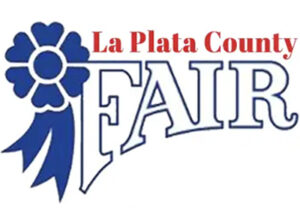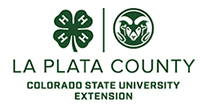For over 70 years, the La Plata County Fair has stood as a remarkable institution, inspiring pride in all who take part. We aim to showcase the tremendous history behind this celebrated event, building upon the storied legacy that has come before us. Do note, however, that this page’s historical overview is just the beginning – as we continue to learn more about the fair’s past, we will regularly update and expand upon this narrative.

“4-H’ers display their Herefords at the La Plata County Fairgrounds in the 1950’s.” (Photo and caption, Durango Herald, August 11, 1985.)
The Path to the La Plata County Fair
The La Plata County Fair began in 1948 and many of today’s participants come from a long line of 4-H’ers that stretches back generations. But the path to the La Plata County Fair stretches back too, all the way to the 1890’s when “Durango was enjoying its second decade and La Plata County, a quarter of a century.”
In 1899, the fairgrounds began hosting the Colorado-New Mexico Fair, with an eye on promoting Animas River Valley communities and the region. The Durango Herald (Oct. 19, 1899) “praised the general display of farm and garden products, including sugar beets, corn watermelons, fruits and potatoes.” Local buttons popped when a Denver visitor said: “The display was much more creditable that the one Denver had.” That year, the fair also included agricultural and horticultural exhibits, foot races, horse races and a daily ball game.
By 1913, “hundreds of brightly colored incandescent lights transferred night into day.” An aeroplane appeared and set two world records – altitude and highest crash site. The Durango Herald, September 25, 1913 proclaimed the “flavor of the West, the romance of the past and present which always characterizes these occasions, are even more marked than usual this year.”
The 1919 Colorado-New Mexico Fair was considered a huge success, with attendance at an all-time high. Attendees were treated to parades, agricultural exhibits, rodeo events, horse races, baseball games, trick riding and shooting exhibitions.
Although financial difficulties led to the fair’s closure in 1921, it paved the way for the modern La Plata County Fair. Today, the fair combines tradition with technology and continues to capture the hearts of participants and visitors alike.
(Quotes in this section from The Durango Herald, August 20, 2000, unless otherwise noted.)
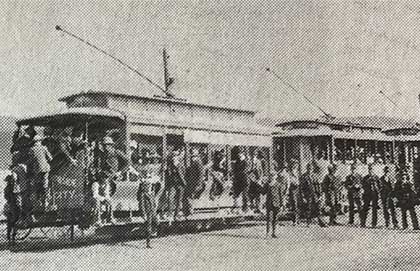
“Fair patrons hitch a ride to a baseball game at the fairgrounds in 1892 on the street car that used to run up Main Avenue.”(Photo and caption, Durango Herald, Sunday, August 20, 2000)

“Jockeys race their horses around the track at the La Plata County Fairgrounds near the turn of the century. Horse racing in Durango was a popular event from the 1880’s.” (Photo and caption, Durango Herald, Sunday, August 20, 2000)
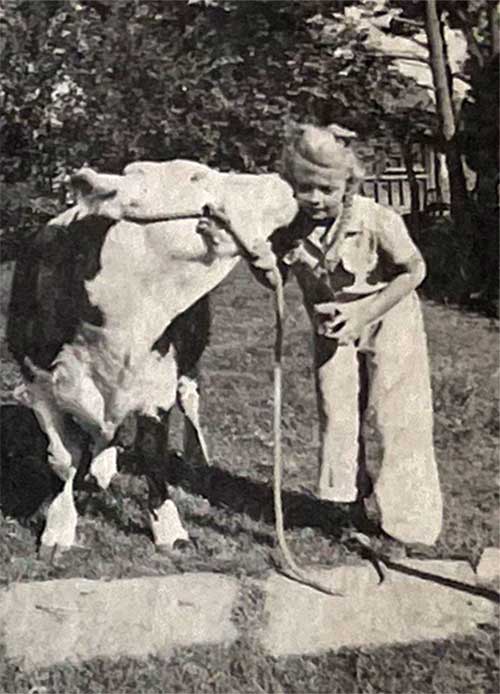
“Marilyn Paulek (11) gets a kiss from her grand champion Hereford in 1944.” (Photo and caption, Durango Herald, August 11, 1985)
4-H and the La Plata County Fair
For generations, 4-H has been a vital part of the La Plata County Fair.
The earliest record of 4-H Club work in La Plata County is 1918, when there were 13 Clubs and a membership of 130.
Years later, the 4-H Club would grow with members and activities. A Queen was chosen and delegates from La Plata County were sent to the State Fair.
According to Marguerite Paulek, the La Plata County Fair “was really booming in the late 1940’s and 1950’s.” In 1947 there were 410 4-H members.
Marguerite taught many 4-H’ers how to sew and cook. “Thousands of yards of material were used to show those kids how to sew,” she said. Other times, the 4-H’ers went on picnics and served brunches of the food they cooked.”
Since 1947, there has been a steady decline of 4-H members in La Plata County. In 1985, Victor Paulek attributed the decline to “kids running around in cars.”
Despite this, 4-H remains an organization dedicated to helping youth learn new skills, developing their character, and making a positive difference in their community.
(Quotes in this section from The Durango Herald, August 11, 1985.)

“4-H Club Leader Marguerite Paulek, Second from right, stands with members of 4-H Club group in the early 1950’s.” (Photo and caption, Durango Herald, August 11, 1985)
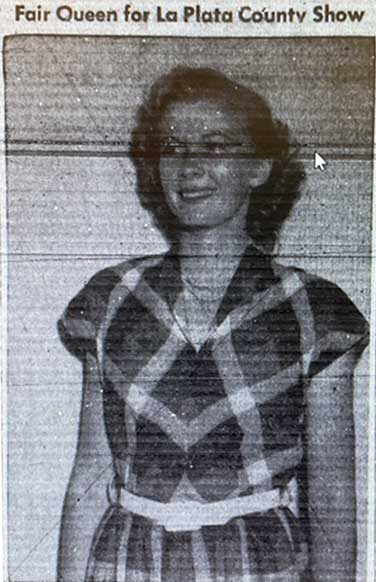
“Marilyn Paulek of Breen will reign over the 1949 La Plata County Fair as Queen for the annual show. She was selected by her fellow 4-H’ers during a county council meeting. (Photo and caption, Herald Democrat, September 11, 1949.)
